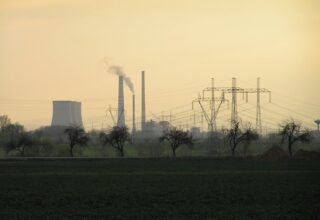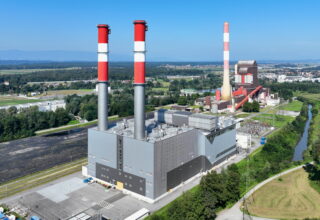Fossil Gas
Europe’s continued reliance on fossil gas comes at a staggering cost. The extraction, transportation and burning of this fuel not only contribute to climate change and thousands of premature deaths each year, but also drive energy poverty, and make us vulnerable because of our heavy dependence on imports. Despite these warnings, many countries in Europe plan to increase their fossil gas capacity in the electricity sector. This is diverting crucial investments away from renewable energy solutions that are vital for cutting bills, safeguarding our health, and securing a prosperous future for our children. It is imperative that we swiftly prioritise the phaseout of fossil gas and redirect our resources towards clean and sustainable alternatives so that we take back control of our energy supplies, and address the biggest crisis of our age: the climate emergency.
-

Helsinki’s Salmisaari coal plant closes, marking a near-total coal exit for Finland
Power utility Helen is decommissioning its 177 MW Salmisaari coal plant today, bringing Finland to the brink of a full coal phase-out four years ahead of schedule.
-

Greece’s coal exit accelerates from 2028 to 2026
Greek utility PPC plans to shut down remaining coal operations by 2026, effectively moving Greece’s coal exit forward by two years.
-

Slovakia moves coal exit forward from 2030 to 2024
Slovakia moves its coal exit forward by six years, with its remaining coal plants—Vojany (220 MW) and Teko (121 MW)— scheduled to close in 2024.
-

Austria retains coal-free status
Austria reinstates its coal-free status after an emergency measure to reopen the mothballed Mellach coal plant (246 MW) in June 2022 failed to move ahead due to the cost burden it would’ve placed on taxpayers.
-

Utility Enel announces retirements of all coal plants in Italy by 2025 except Sulcis
Fusina (640 MW) will close by the end of 2023, replaced by a new gas plant in August 2024. Torrevaldaliga Nord (1980 MW) will retire by 2025. Sulcis’ (590 MW) closure was pushed back to 2027 due to delayed interconnections with Italy’s mainland.
*How the German coal exit translates to our countdown
Though the end date for coal is foreseen in 2038 only, the law does retire approximately 23 GW prior to 2030. For lignite plants, a plant-specific phaseout pathway exists, but for hard coal, the law does not explicitly state which plants shall retire when, as the closure pathway shall be defined through auctions first. In order to reflect that, according to the law, all but 8 GW of German hard coal capacity will retire by 2030, we made assumptions on which hard coal plants would retire before 2030 to align the hard coal closure path with our counter’s methodology, which only registers retirements when the exact coal plant is known.
In December 2020, a set of three hard coal plants that, according to our evaluation, were implicitly intended to retire after 2030 (mostly because of their young age), unexpectedly won in the first auction that determines hard coal retirements. As a result, we added it to the list of plants that are to retire by 2030 at the latest. At the same time, we did not assume that other plants are now set to retire later, i.e. after 2030, just to fulfill the intended phase-out pathway of the German law. Instead, the list of plants set to retire by 2030 grew by three. This leads to a new setup with less than the 8 GW of hard coal capacity that are described in the law will be left after 2030. In short: we anticipate a quicker phase-out of German hard coal capacity.
Despite RWE's announcement in 2022 that it plans to exit coal by 2030, the federal government has the authority to retain some of RWE's coal units as grid reserve beyond 2030. We have therefore not yet included the plants covered by RWE's announcement in the list of coal plants scheduled to retire by 2030 at the latest.
